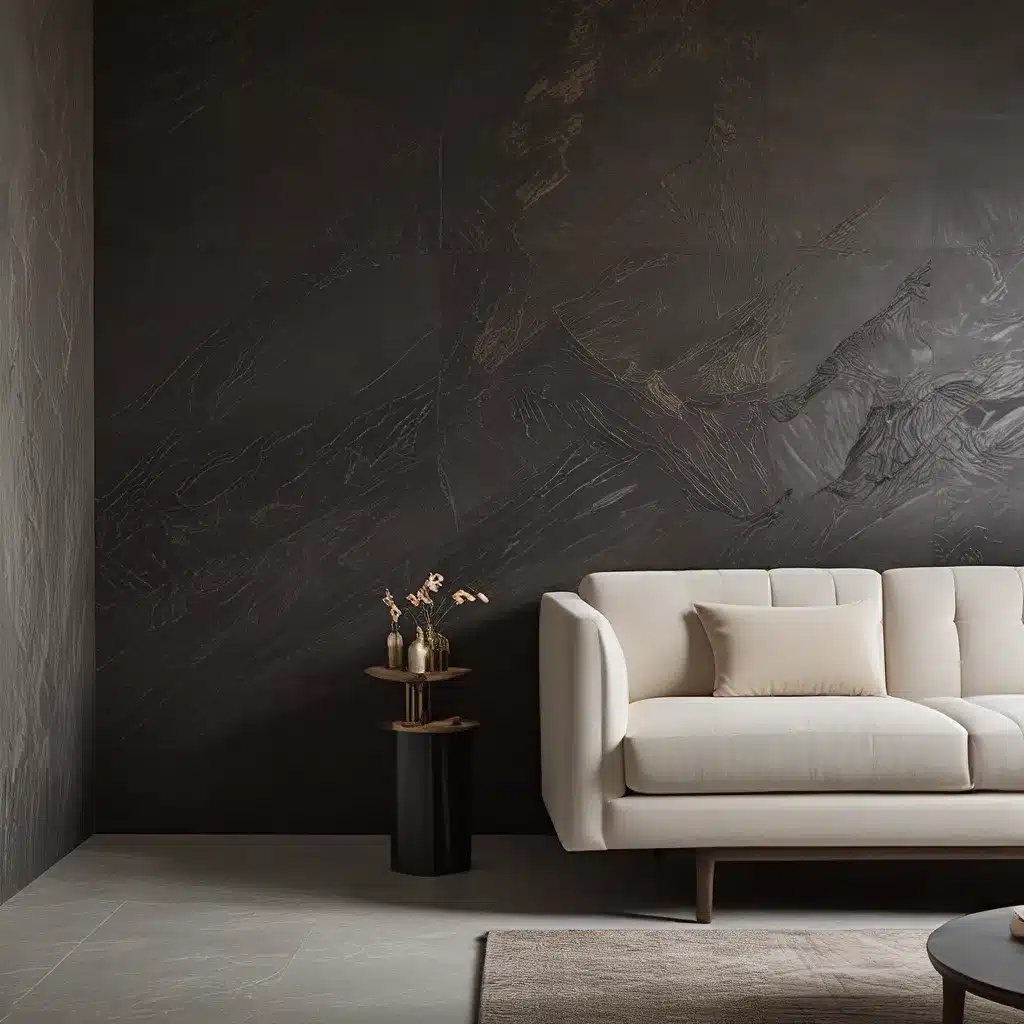
Texture Takeover: Elevating Interiors with Unique Surface Treatments
Ah, the age-old dilemma – how do you take a boring, flat interior and transform it into a captivating, visually-engaging space? Well, my fellow design enthusiasts, I’m here to let you in on a little secret: the key lies in the power of texture.
You see, when it comes to interior design, most people tend to focus on the big-ticket items – the furniture, the color palette, the lighting fixtures. But what they often overlook is the crucial role that surface treatments can play in elevating the overall aesthetic. It’s like the unsung heroes of the design world, quietly stealing the show while everyone else is distracted by the more glamorous elements.
Now, I know what you’re thinking – “Texture? Really? How exciting can that be?” Trust me, my friends, when you dive into the world of unique surface treatments, the possibilities are truly endless. From the rich, rustic charm of exposed brick to the sleek, modern allure of polished concrete, there’s a textural element to suit every design aesthetic.
Embracing the Unexpected
One of the things I love most about textural elements is their ability to inject an element of surprise into a space. Think about it – in a world where so much of interior design is focused on creating a sense of balance and harmony, a well-placed textural accent can be the perfect way to add a touch of the unexpected.
Take, for example, the trend of incorporating reclaimed wood into modern design schemes. At first glance, the juxtaposition of the weathered, imperfect wood against the clean lines of contemporary furniture might seem a bit jarring. But when executed with skill and intention, it can create a truly stunning visual contrast that leaves a lasting impression.
As Bob Borson of Life of an Architect points out, the use of varying line weights in architectural drawings can also be a powerful tool for creating depth and dimensionality. By strategically applying heavier or lighter lines, designers can guide the eye and help the viewer better understand the spatial relationships within a given space.
Texture as Storytelling
But textural elements aren’t just about creating visual interest – they can also be a powerful way to infuse a space with a sense of history and character. After all, every surface has a story to tell, and the more unique and textured it is, the more intriguing that story becomes.
Imagine walking into a room with walls covered in hand-applied plaster, each imperfection and brush stroke a testament to the craftsmanship of the artisan who created it. Or stepping onto a floor made of reclaimed barn wood, the nicks and knots a reminder of the structure’s past life. These kinds of surfaces don’t just look beautiful – they also have the power to transport us, to evoke a sense of nostalgia and wonder.
As the General Services Administration notes, the preservation of historic surfaces and finishes is crucial for maintaining the integrity and character of a building. By embracing unique textural elements, we can honor the past while creating spaces that feel truly timeless.
Texture as Mood-Setter
But the benefits of incorporating texture into your interior design go beyond just the visual appeal. Texture can also have a profound impact on the overall mood and atmosphere of a space.
Think about the difference between walking into a room with smooth, sterile walls versus one with a tactile, undulating surface. The former might feel cold and uninviting, while the latter could exude a sense of warmth and comfort. As the team at The Weathered Door points out, the choice of paint finish can also play a significant role in establishing the desired mood, with matte or eggshell sheens often creating a more inviting, lived-in feel.
But it’s not just about the walls – the textures underfoot can be just as impactful. Imagine the difference between walking on a plush, shaggy carpet versus a crisp, polished concrete floor. The former might evoke a sense of coziness and relaxation, while the latter could lend an air of modern sophistication.
Texture as Functional Flair
Of course, textural elements aren’t just about aesthetics – they can also serve a practical purpose. Take, for example, the use of slip-resistant flooring in commercial spaces. By incorporating a slightly rougher surface texture, designers can enhance safety and minimize the risk of accidents.
Or consider the use of acoustic panels or sound-absorbing materials on walls and ceilings. These textural elements don’t just add visual interest – they can also help to improve the overall acoustics of a space, creating a more comfortable and enjoyable environment for both occupants and visitors.
Bringing It All Together
So, there you have it, my friends – the power of texture in interior design. From adding visual interest and storytelling to setting the mood and serving practical functions, these unsung heroes of the design world are truly worth their weight in gold.
Of course, incorporating the right textural elements into your space is no easy feat. It requires a keen eye for design, a deep understanding of materials and their properties, and a willingness to experiment and take risks. But trust me, when you get it right, the results can be nothing short of magical.
And who knows, maybe the next time you walk into a space, you’ll find yourself running your hands along the walls, marveling at the intricate patterns and textures that lie beneath the surface. After all, in the world of interior design, sometimes the most extraordinary things can be found in the most unexpected places.
So, what are you waiting for? It’s time to embrace the power of texture and take your interiors to new heights. Reading General Contractor is here to help you every step of the way, with expert guidance and top-notch craftsmanship to bring your textural vision to life.
Related posts:
No related posts.




